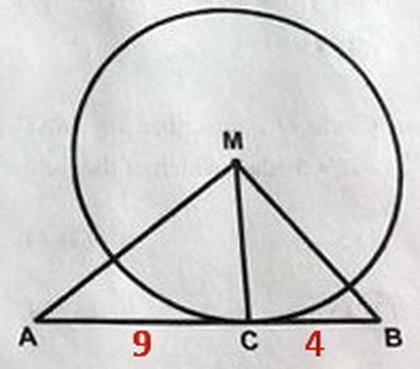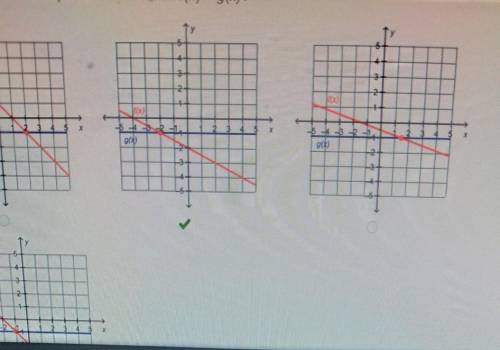 21
21 (a) 4
(b) 2√3
(c) 60°
(d) 120°
Step-by-step explanation:
(a) The relationship between tangents and secants is ...
CB^2 = CD·CA
Filling in the given values, we find ...
CB^2 = 2·(2+6) = 16
CB = √16 = 4
The length of BC is 4 units.
__
(b) Triangle ABC is a right triangle, so the sides of it satisfy the Pythagorean theorem.
CA^2 = CB^2 +AB^2
8^2 = 16 +AB^2
AB = √48 = 4√3
The radius is half the length of AB, so the radius is 2√3.
__
(c) The measure of angle C can be determined from the cosine relation:
cos(C) = CB/CA = 4/8 = 1/2
C = arccos(1/2) = 60°
The measure of angle C is 60°.
__
(d) Arc AD is intercepted by angle ABD, which has the same measure as angle C. Hence the measure of arc AD is twice the measure of angle C.
The measure of arc AD is 120°.
 11
11 The length of the radius of the circle K is 
Step-by-step explanation:
we know that
The triangle CDE is a right triangle with the 90 degree angle at point E
so
Applying the Pythagoras Theorem
Find the length of CD (diameter of the circle K)

substitute the values



Find the radius
Remember that the radius is half the diameter
so

 1
1 D
Step-by-step explanation:
The radius r is the distance from the centre to a point on the circle.
Calculate r using the distance formula
r = √ (x₂ - x₁ )² + (y₂ - y₁ )²
with (x₁, y₁ ) = (0, 0) and (x₂, y₂ ) = (- 5, - 12)
r = 
= 
= 
= 
= 13 → D
 6
6 6
Step-by-step explanation:
We can use the geometric mean theorem:
The altitude on the hypotenuse is the geometric mean of the two segments it creates.
In your triangle, the altitude is the radius CM and the segments are AC and BC.


radius = 10
Step-by-step explanation:
As AB is the diameter of the circle, the angle ACB inscribes an arc of 180 degrees, so it is a 90 degrees angle, then the triangle ACB is a right triangle, with hypotenusa AB.
We can find the length of the diameter AB using the Pythagoras' theorem:
AB^2 = CA^2 + CB^2
AB^2 = 12^2 + 16^2 = 400
AB = 20
The radius of the circle is half the diameter, so the radius is 20 / 2 = 10
 40
40  40
40 I have no idea
Step-by-step explanation:
but here's this

I have no idea
Step-by-step explanation:
but here's this

 8
8 To find the midpoint, add the 2 x values and divide by 2 and then do the same with the y values:
Midpoint = (-1 +4)/2 , (5 + -3)/2
Midpoint = 3/2, 2/2
Center of circle = (3/2, 1)
Radius = √((3/2 - -1)^2 + (1-5)^2)
= √89/2 = 4.7 units.
Circumference = 2 x PI x r
= 2 x 3.14 x 4.7 = 29.5 units
Area = PI x r^2
= 3.14 x 4.7^2
= 3.14 x 22.09
= 69.4 square units.

It will provide an instant answer!
